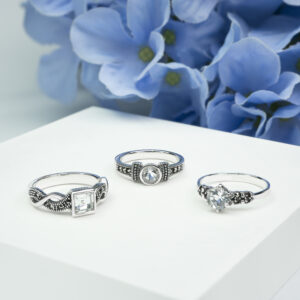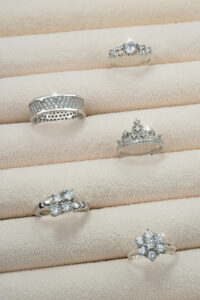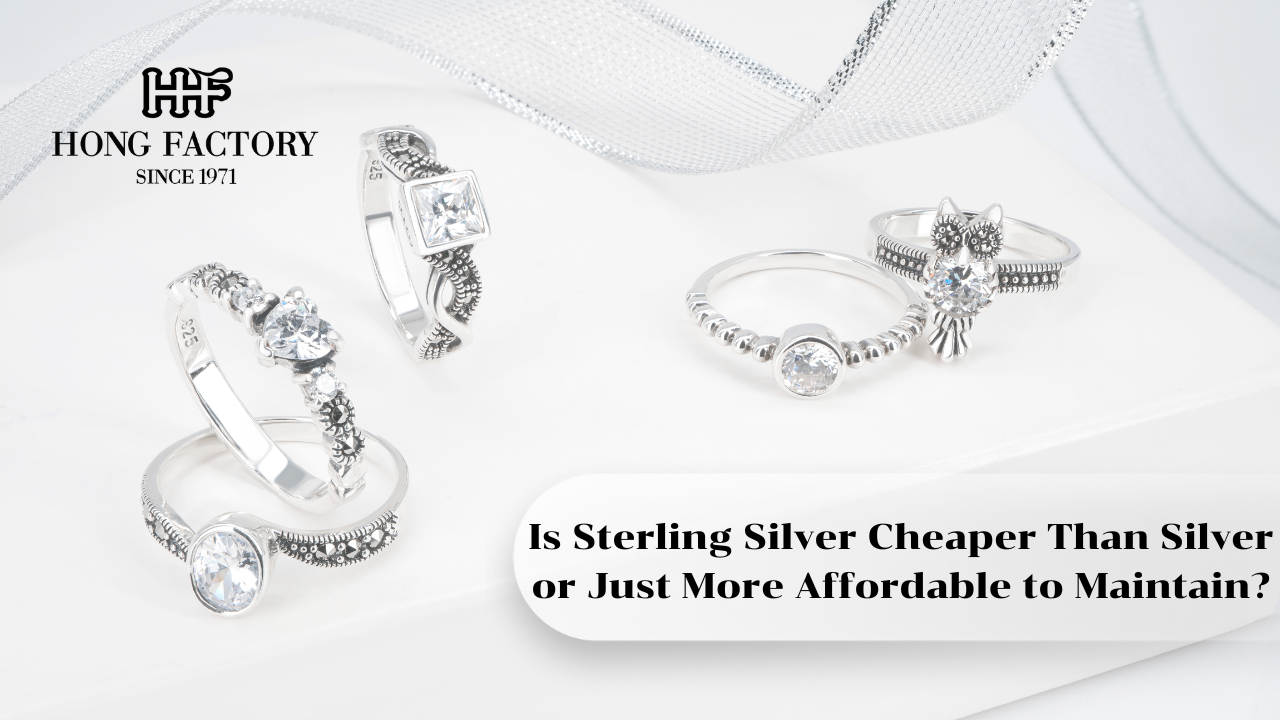Silver jewelry has always symbolized sophistication, luxury, and timeless appeal. Yet for everyday buyers, the practical side of owning silver, especially maintenance and long-term cost plays an important role. Between sterling silver and pure silver, the question often arises: is sterling silver truly cheaper, or simply more affordable to care for? This article explores the differences between these two metals in terms of cost, upkeep, and long-term value. 925
Understanding the Difference Between Sterling Silver and Pure Silver

Before comparing maintenance and value, it’s essential to understand what distinguishes these two materials. Pure silver, also known as fine silver or .999 silver, is composed of 99.9% pure silver. It’s soft, bright, and elegant, but it can scratch, dent, and lose shape easily.
Sterling silver, by contrast, is made of 92.5% silver and 7.5% other metals usually copper. This alloy gives sterling silver greater durability, making it less likely to bend or wear out. The blend also affects cost: since it contains less pure silver, sterling silver is naturally more affordable.
This difference in composition influences both price and practicality, making sterling silver the go-to choice for everyday jewelry and decorative pieces.
Maintenance and Everyday Practicality
Owning silver isn’t just about the initial purchase it’s about how much time and money go into maintaining it. Pure silver, while highly valuable, requires delicate care. It can tarnish over time and must be cleaned gently to prevent scratches. Sterling silver, on the other hand, offers easier upkeep.
The presence of alloy metals makes sterling silver more resistant to deformation and easier to polish. Most sterling silver jewelry can be cleaned with a soft cloth and a mild silver cleaner, restoring its shine within minutes. Many modern sterling silver pieces are also coated with rhodium, which prevents tarnish and extends longevity.
From a maintenance standpoint, sterling silver clearly wins for convenience and cost efficiency. Pure silver might hold higher metal value, but it demands more frequent and careful upkeep.
Is Sterling Silver Cheaper Than Silver or Just More Affordable to Maintain?
Yes, sterling silver is cheaper than pure silver both in upfront cost and long-term maintenance. Its alloy composition reduces silver content, which lowers the base price per gram. But beyond material costs, the savings continue after purchase.
Pure silver items often need professional cleaning or re-polishing to maintain their brilliance. Sterling silver’s durability minimizes those expenses, as owners can care for it easily at home. The occasional polish or cleaning cloth costs very little compared to specialized treatments for pure silver.
In the long run, this means that while both types of silver can last for decades, sterling silver remains the more practical and affordable choice to maintain.
Durability and Longevity

Durability plays a crucial role in how affordable a metal is to own. Pure silver is beautiful but soft, making it vulnerable to dents, scratches, and bending. Over time, these imperfections can diminish the appearance and even structural integrity of the piece.
Sterling silver’s added metals strengthen it, allowing it to withstand everyday use whether in jewelry, utensils, or décor. For items that are worn or handled frequently, such as rings, bracelets, and earrings, sterling silver maintains its beauty much longer without requiring repairs or reshaping.
This durability translates to long-term savings, as buyers spend less on maintenance and replacements.
Cost of Ownership and Value Retention
While pure silver carries greater intrinsic metal value, it’s not necessarily the better investment for everyone. The resale difference between fine and sterling silver depends largely on market conditions and the form of the silver item.
For fashion jewelry and everyday accessories, sterling silver provides far better value for money. It’s less expensive to produce, easier to care for, and holds up well under daily wear. In contrast, pure silver’s softness means it’s typically reserved for collectible coins, investment bars, or high-end art pieces not practical wear.
In essence, the cost of ownership favors sterling silver for lifestyle buyers who prioritize usability and style over investment potential.
Why Consumers Prefer Sterling Silver
Modern consumers often look for durability, beauty, and value combined in one purchase. Sterling silver checks all these boxes. It offers the luxurious appearance of fine silver without the maintenance challenges or steep price tag.
Moreover, its versatility allows for creative designs and finishes, from polished minimalism to oxidized vintage looks. The metal’s strength supports gemstone settings and intricate craftsmanship that pure silver cannot easily sustain.
This combination of resilience and affordability makes sterling silver the preferred choice for both jewelers and buyers in the modern market.
The Practical Beauty of Sterling Silver
When comparing sterling silver to pure silver, the verdict is clear: sterling silver is not only cheaper but also far more affordable to maintain. While pure silver holds a higher intrinsic value, it requires extra care and investment in upkeep.
Sterling silver, with its balance of strength, beauty, and low maintenance, delivers lasting appeal for a fraction of the cost. In the long run, this makes it the smarter, more sustainable choice for anyone who values elegance and practicality. For everyday wearers and collectors alike, sterling silver shines as the perfect blend of affordability and timeless sophistication.
